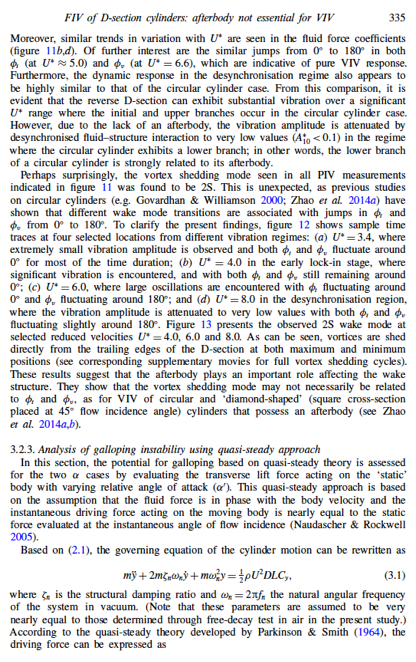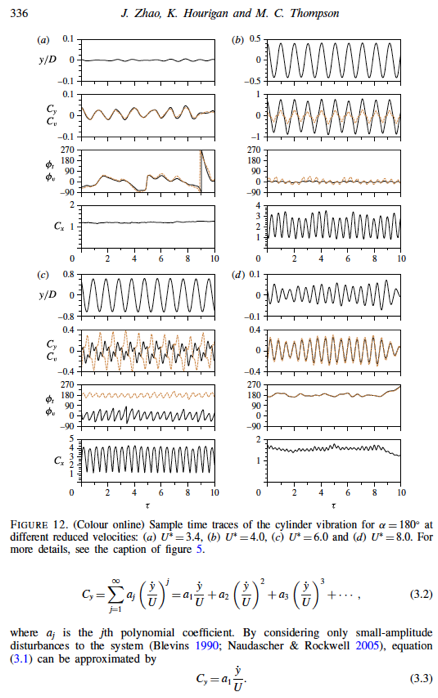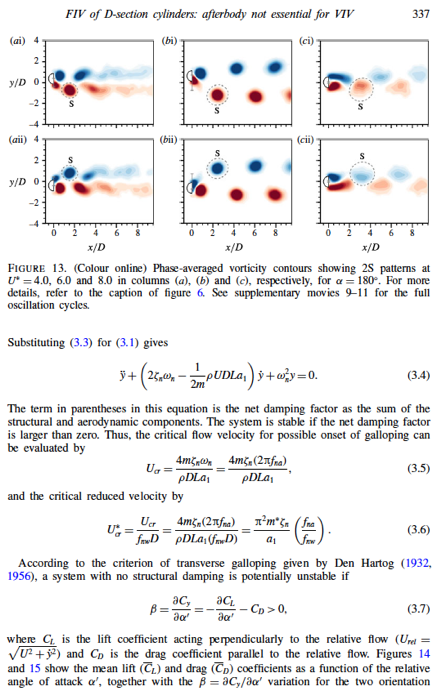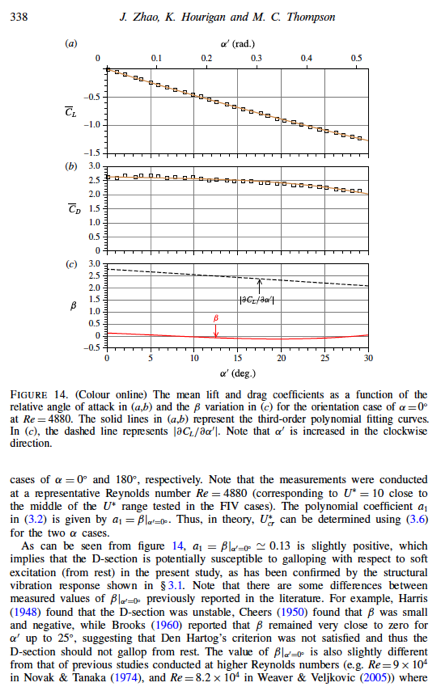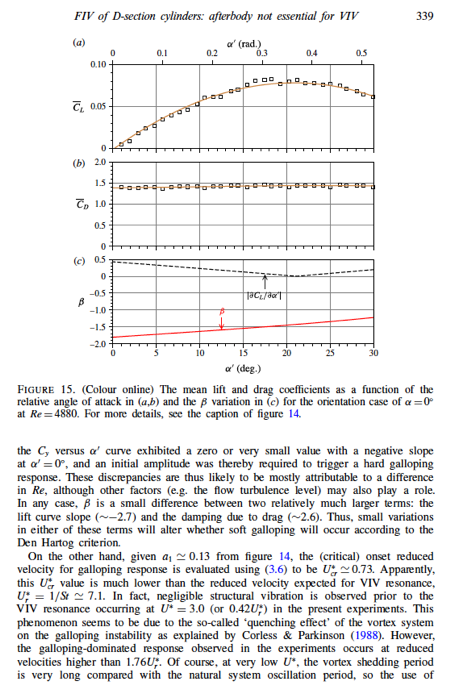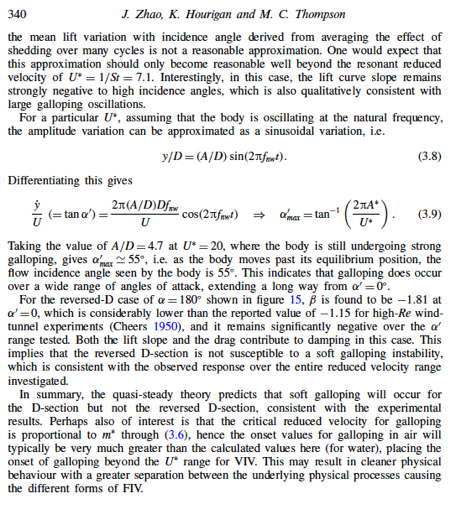PROJECT
Measurement and Analysis of Bluff Body Wakes and Fluid-Structure Vibration
The general aim of the project is to provide students with practical exercises of research analysis and experimentation of flow-induced vibrations to familiarise them with research tools linked to the lecture course. These are the same type of research tools that we use in our ongoing studies of vortex dynamics, bluff body wakes and flow-induced vibration.
The project is constructed in the spirit of the giant of fluid mechanics, G.I. Taylor: “This is an interesting problem, why don’t you have a go at it” and “G. I. was happiest doing experiments with simple laboratory apparatus”, “Even by the standards of the day and place, G. I.’s equipment was not only simple (and beautifully devised to illuminate the phenomenon being studied) but it was often distinctly “low tech”.
(http://www.fem.unicamp.br/~im250/SITE%20IM250/BIOGRAFIAS/GITaylor%20in%20his%20Later%20Years.pdf
These exercises can be performed in approximately 40 hours at the home base of the students using public access software and readily available materials and equipment. It is important to note that it is the endeavour of attempting the exercise, learning from it, and using it as a basis for future skill development that is more important than whether it works or not.
Specific Aims:
- To construct and use a simple anemometer to measure the flow velocity of an open jet
- To measure the vortex-induced vibration of elastically mounted bodies of different geometries (cylinder, D-shape cylinder, elliptical cylinder)
- To use analyse given data of a bluff body wake using OpenPIV to plot velocity and vorticity fields
- To use Python and Anaconda to plot the force and the den Hartog stability coefficients
- To use the galloping properties of a D-shape cylinder to construct a wind turbine with bluff body blades
- To write a report in JFM Rapids style with a short video as Supplementary Material
Three simple models (from cheap and readily available material) to be constructed and tested:
- Cup Anemometer
- Simple rig with elastically mounted bluff bodies
- Wind turbine tower - D-shape cylinder “blades”
Open access software available on the Web:
- OpenPIV: https://au.mathworks.com/matlabcentral/fileexchange/27659-pivlab-particle-image-velocimetry-piv-tool
- Python packages provided by Anaconda: https://www.anaconda.com/distribution/
Exercise 1 Open Jet and Velocity Measurement (Time: Approx. 6 hours)
In research, we use wind tunnels to provide the air flow around bluff bodies. An open jet is a simple way to provide such an air flow.
Before you make any bluff body models, you will need to find a suitable ventilator or airblower, such as a domestic fan or hairdryer, and determine its flow velocity. Then, the dimensions of the models for flow-induced vibration and D-section turbine can be calculated to be in the range of reduced velocities for VIV or galloping to be excited.
Domestic electric fans may not provide a high enough velocity. A hairdryer may but the bluff body models will need to be small enough to fit within the diameter of the air jet.
One means of measuring the air jet velocity is to use an anemometer.
At the following website, amongst others, you can see how to construct
a simple anemometer to measure different wind
speeds https://www.youtube.com/watch?v=SZpXGPMvJNo). The
dimension of the anemometer should be smaller than the diameter of the
air jet. Furthermore, think about how you could calibrate for actual
speed.
For a cylinder, VIV occurs around a reduced velocity such that the vortex shedding frequency from a fixed cylinder equals the natural frequency of vibration of the elastically mounted cylinder. That is, U* ≈ 5.
Cup Anemometer

Exercise 2 Experiment of VIV and Galloping of Bluff Bodies (Time: Approx. 8 hours)
Students to construct simple cylinders - e.g., circular, square, D-shape, elliptical - plus a mounting frame to elastically mount (rubber bands) the bodies. Watch the following video to see such a set-up: https://www.youtube.com/watch?v=Eh_vOcXazaU
Determine the natural frequency of vibration of the system by displacing the cylinder vertically and measuring the oscillation frequency. You could also put a measuring rule next to it and estimate the amplitude variation with time, thus allowing the damping of the system to be calculated.
Use fan at different speeds/distances to give different air speeds at working section.
Fan and Elastically Mounted Body

Exercise 3 PIV Analysis of Bluff Body Wake (Time: Approx. 6 hours)
Particle Image Velocimetry (PIV) is an important part of flow imaging - this exercise will allow the student to access and implement open access software to analyse data obtained using a high speed camera on an actual flow obtained in a water channel at the FLAIR lab.
Use OpenPIV (https://au.mathworks.com/matlabcentral/fileexchange/27659-pivlab-particle-image-velocimetry-piv-tool), which has tutorials on how to use plus examples, to analyse data provided. Plot velocities, velocity magnitudes, vorticity, etc.
The data for the wake of a circular cylinder (5 pairs of images) are
available at: Cylinder PIV Data
The full set of images is available at a link sent to the
participants. Contact Morten Brøns if it doesn't work.
PIV Information:
Cylinder diameter D = 25.0[mm]
Flow speed U = 151.52 [mm/s]
The PIV image pairs were sampled at 10 Hz.
Time separation for images in each pair deltaT = 2[ms]
Magnification factor of images MF = 14.701 [px/mm]
the cylinder centre reference in pixels refpx, refpy = 1771, 980
Exercise 4 Den Hartog Analysis of D-Section Cylinder (Time: Approx. 6 hours)
Some Water Channel data from Monash on a D-section cylinder at an angle of 0° and 180° for students to do a galloping stability analysis. Data files are provided.
Students to practise using Python and Anaconda, as these are powerful software tools for analysis and presentation of results. (If does not work after trying, then use other software such Matlab or Excel. The exercise is about learning new research tools).
The Python packages provided by Anaconda: https://www.anaconda.com/distribution/. There are a number of videos available explaining how to use Python with Anaconda, such as https://www.youtube.com/watch?v=YJC6ldI3hWk. The data are available here: QS_D-section_deg000.dat and QS_D-section_deg180.dat
Galloping stability coefficent (den Hartog) curve
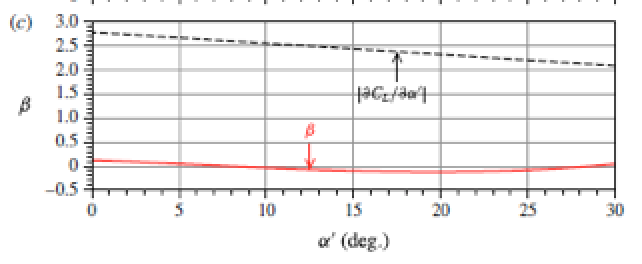
Exercise 5 “Aero Tourbillion” Model (Time: Approx. 4 hours)
Students to make a model (split a cylinder to D-section cylinder (e.g., use half round dowel wood or a cardboard tube), pin to simple wind turbine tower (e.g., https://www.youtube.com/watch?v=jEhW6xFv49k ), blow with fan as set up in Exercise 1, and show it only moves if given an initial spin if the D-section cylinder is facing the right way (Lanchester’s ``aero tourbillion” model)? Explain what is happening from the stability analysis you did in Exercise 4.
Wind Turbine with blades
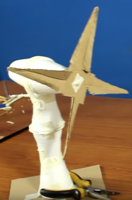
Exercise 6: Write up a Report (Time: Approx. 10 hours)
To practise writing in Journal style and practise using Latex, download the style file from the Journal of Fluid Mechanics and write your report (up to 10 pages, like the JFM Rapids) in that style, complete with references. Templates can be found at:
https://www.cambridge.org/core/journals/journal-of-fluid-mechanics/information/instructions-contributors
Students should make a short video showing manufacture and results, as Supplementary Material, as encouraged by journals.
References
Lanchester, F.W., Aerodynamics, Archibald Constable & Co. Ltd.,
London, 1907. (See also Appendix 1). Excerpts
Zhao, J., Hourigan, K., Thompson, M.C., Flow-induced vibration of D-section cylinders: An afterbody is not essential for vortex-induced vibration, Journal of Fluid Mechanics, 851, 317-343, 2018. (See also Appendix 2).
Appendix 1
Excerpts from Lanchester (1907)
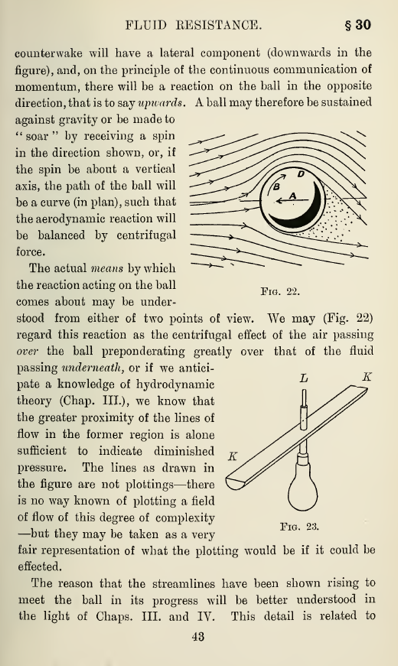
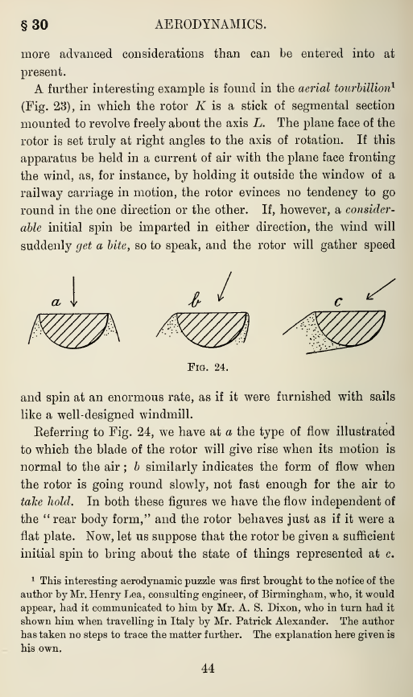

Appendix 2
Excerpt from Zhao et al. (2018)
